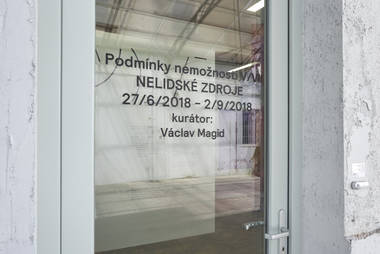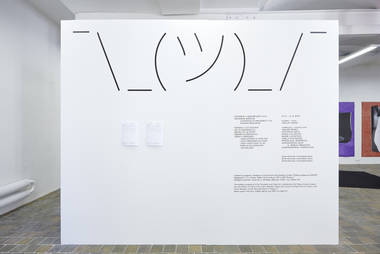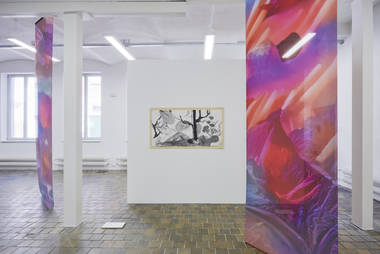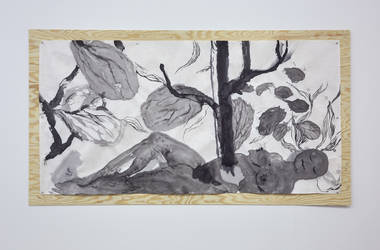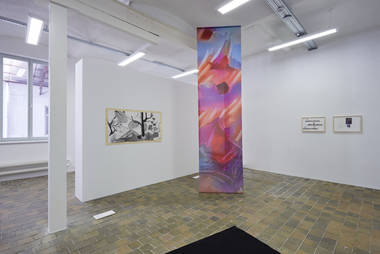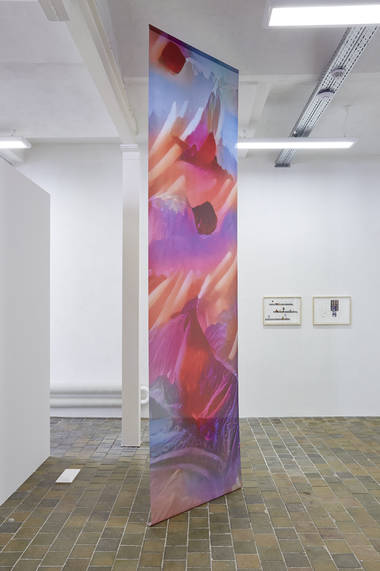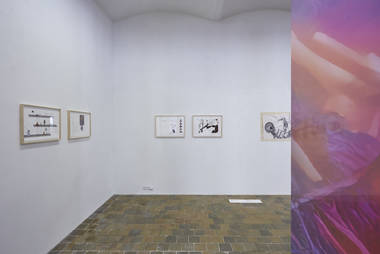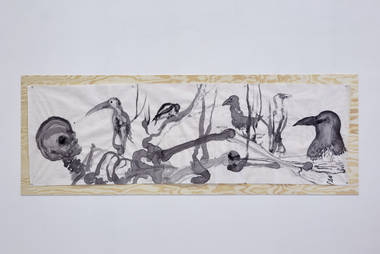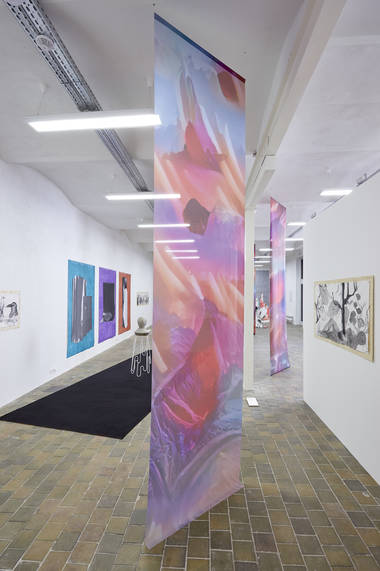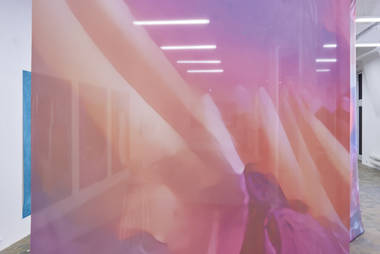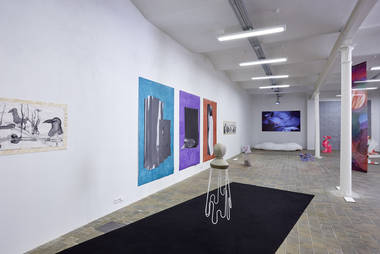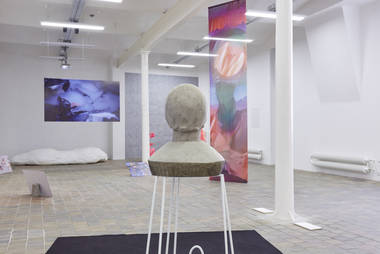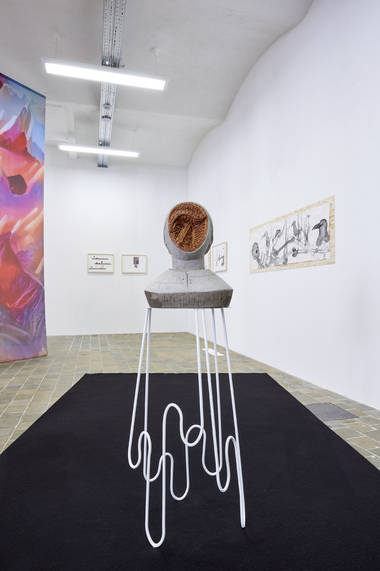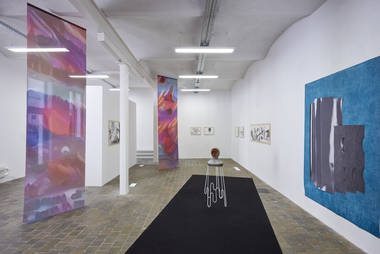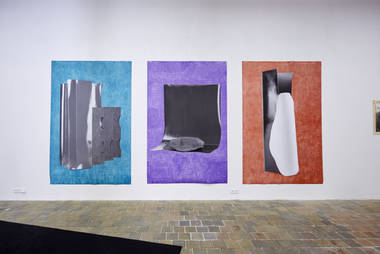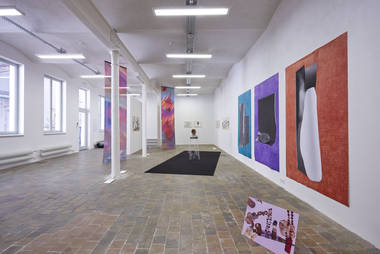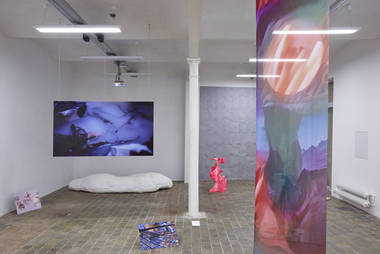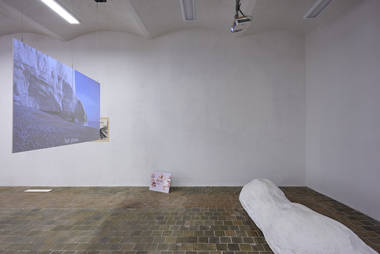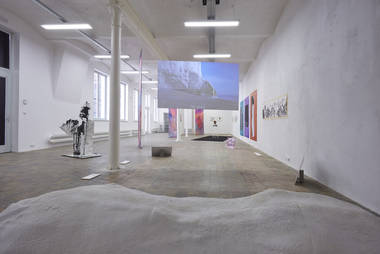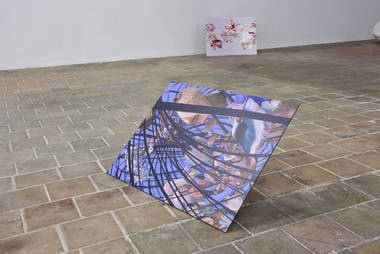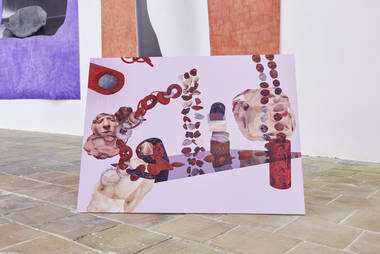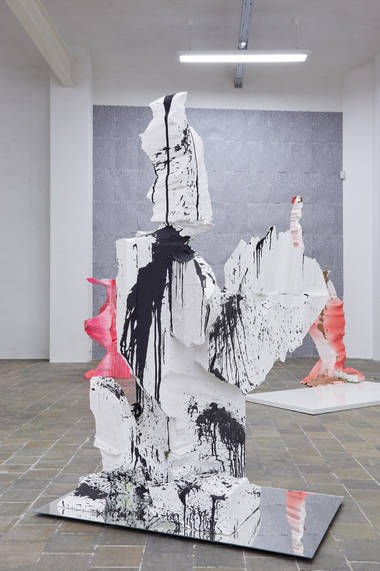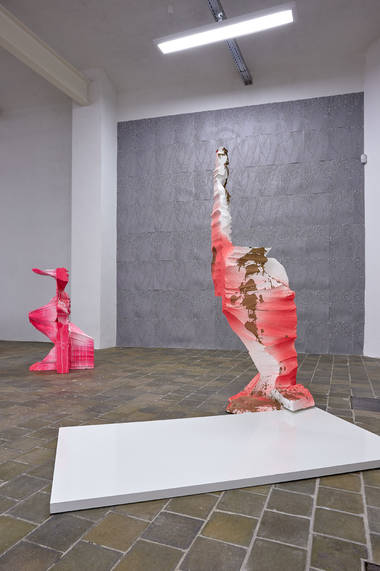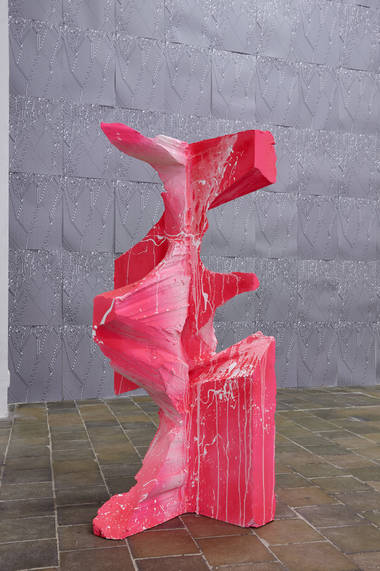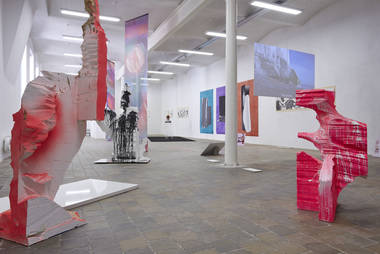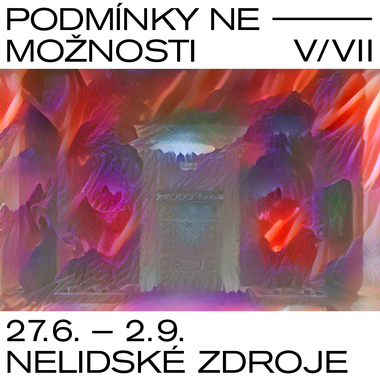Conditions of Impossibility V/VII: Inhuman Resources
6/27 – 9/2/2018
opening: June 26, 2018 from 6PM
guided tour with the curator: August 21, 2018 from 7PM
artists: Dočasná zóna bot, Anna Hulačová, Marie Lukáčová, Jakub Němec, Adéla Součková, Aleksandra Vajd & Jimena Mendoza, Miroslava Večeřová, Aleksandrina Yordanova
curator: Václav Magid
Thus far the exhibition cycle Conditions of Impossibility has examined the transformations taking place of time, space, work and language in their capacity as the basic parameters framing subjectivity. However, the word “subject” has often been used as though it were synonymous with “human being”. The exhibition Inhuman Resources seeks to rectify matters by interrogating this identification of subject and human being. What should our stance be towards evidence of intelligence and agency in non-human subjects? Should we as distinct individuals be satisfied with being lumped together under the general label of homo sapiens? Can responsibility for the calamitous Anthropocene truly be laid at the feet of humankind qua species? And is there not concealed in the very core of our humanity something alien that defies human knowledge and power?
In the current economic system people are assigned the role of “human resources”. Some might find this demeaning, since we usually speak of “natural resources”. Outrage at the way that individual sentient human beings are reduced to the equivalent of a raw material like oil or gas reveals how Western thinking has long regarded nature, namely as a resource to be exploited for our own purposes. The Enlightenment project of the emancipation of humanity from the dominion of natural forces was also a form of humanisation of the world in which nothing would be permitted to escape rational thought and its practical application. However, the Enlightenment narrative suffers a heroic collapse when the complex structures humanity has created in order to liberate itself from a dependency on the inhuman exterior render humankind itself superfluous to requirements. During the twentieth century the term “inhuman” began to be used to designate the unintended consequences of the endeavour to transform the world into a “world for people”. The invisible hand of the market, the abstract schematics of science, standardised algorithmic operations and a Kafkaesque bureaucratic apparatus must be indifferent to human interests if they are to function properly. They do not resolve questions regarding the authenticity of existence and pay no heed to humanist values. Even art, which wants to express the truth about modern society, is “dehumanised”.
In the end the alienation and perpetuation of human life extends all the way to the destruction of life as such in the form of military and environmental catastrophes. Faced with the turbulence of the era dubbed the Anthropocene a few years ago, it would seem appropriate to reflect upon the future as of a world after human beings, be this in the form of a dystopian scenario in which governance is usurped by machines, or in the form of some kind of salvation of the non-Anthropocenic world in which all living beings are equal. These days the most popular theoretical approaches are those that for some time now have questioned the modernist dualism of humankind versus nature by drawing on metaphors of the cyborg or the concept of a network that includes both human and inhuman actors. In the art world the aestheticisation of inhuman entities for the gaze of the gallery-going public finds itself in conflict with speculation regarding inhuman aesthetics. Here too, ideas of the “inhuman” are most often articulated in connection with posthumanism.
While encounters with the inhuman in visions conjured up of a world “after” humanity are of a painless, playful form, the retrospective view of the world as it existed “before” humankind reveals a gloomy prospect. We find the most intimately known version of inhuman resources in ourselves when we regard our bodies as part of nature. This variant of the inhuman is closest to us because we experience it before we become people upon entering the symbolic order. However, it is here that the oppressive and incomprehensible core of something radically other is concealed that, on the contrary, defies our experience. The “inhuman” in the strongest sense of the word expresses our horror at the transcendence of a world that not only exceeds the possibilities of our cognition, but is indifferent to the very fact of our existence. It is not an accessible “world for humans” nor an unknowable “world in itself”, but an inhospitable “world indifferent to humans”. This inhuman reality triggers anxiety because it is paradoxical: it refuses to be reduced to being a resource for our gratification, and at the same time is a resource that operates through us.
Václav Magid
(transl.: Phil Jones)
The exhibition programme of the Foundation and Center for Contemporary Arts Prague receives support from the Ministry of Culture of the Czech Republic, Prague City Council, State Fund of Culture of the Czech Republic, City District Prague 7
Media support: ArtMap, jlbjlt.net and UMA: You Make Art
